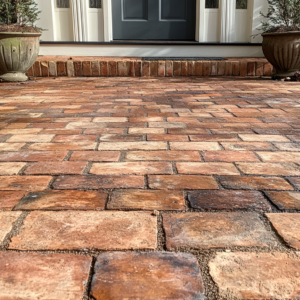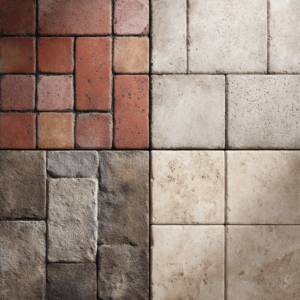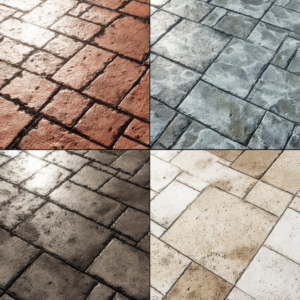In all my years of experience in the hardscape industry, I’ve witnessed how concrete pavers transform ordinary spaces into stunning patios, driveways, and walkways that become the heart of a home. But the true magic happens in the precise moments where raw material meets vision, a transformation made possible by a concrete paver saw.
This unassuming tool is the silent architect behind every flowing curve and razor-sharp corner in hardscaping. When mishandled, it leads to jagged edges, wasted materials, and safety nightmares. When mastered? It becomes an extension of your creative will.
In this comprehensive guide, I’ll share the battle-tested insights and reveal how blade selection, cutting physics, and maintenance rituals separate amateur attempts from enduring artistry.
You may also like: How to make a curved paver walkway without cutting pavers
Jump to:
How the right concrete paver saw dictates your project’s destiny
Selecting the right blade for your concrete paver saw isn’t just a technical decision; it’s the entire foundation of your project’s success. Concrete pavers demand diamond-tipped masonry blades engineered to grind through dense aggregate without shattering the paver’s edges.
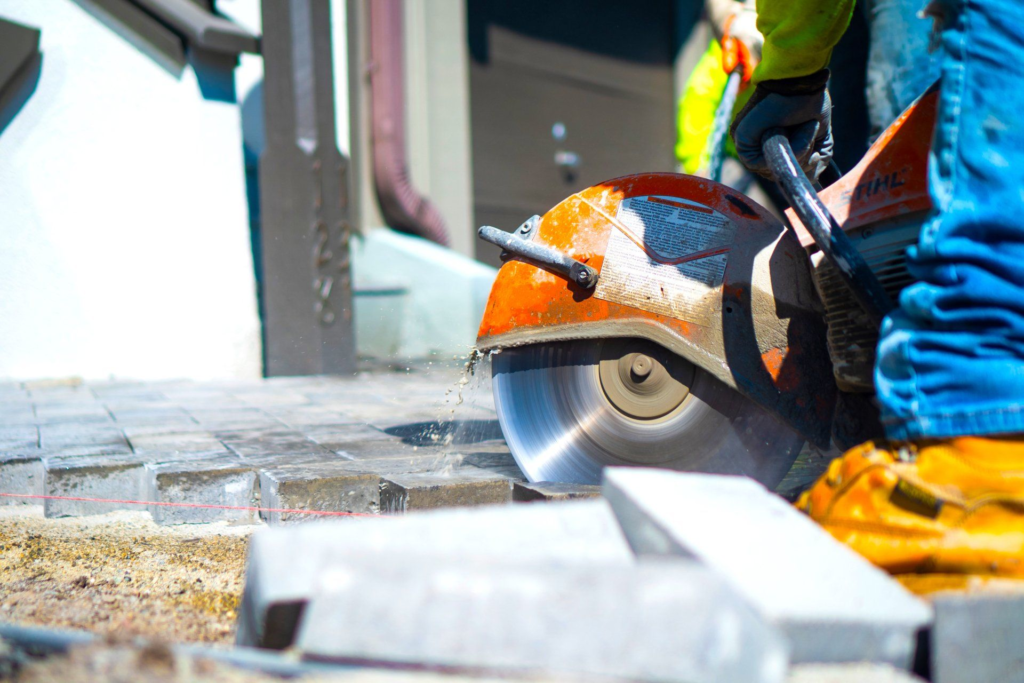
Abrasive blades might tempt budget-conscious DIYers, but they disintegrate rapidly when facing 8,000–12,000 PSI concrete, causing uneven cuts and doubling project time. The real secret lies in matching blade design to material density.
Continuous-rim diamond blades deliver surgeon-like precision for smooth finishes on decorative pavers, while turbo-rim blades with segmented edges offer faster, cooler cuts for high-volume driveway projects.
Blade diameter is another element that dramatically impacts efficiency. While a 14″ blade cleanly slices standard 2.5″-thick pavers in one pass, thicker segmental retaining wall blocks demand a 16″ beast that won’t bog down mid-cut.
In my installations, I measure aggregate hardness with a simple field test: if a steel nail skitters off the paver surface without scratching, I deploy blades with softer metal bonds that expose fresh diamonds faster. This prevents glazing, that frustrating moment when a blade overheats and polishes concrete instead of cutting it.
The physics of perfect cuts
Mastering the concrete paver saw requires understanding the invisible forces at play. Concrete fractures along aggregate lines when tension exceeds compression strength, meaning successful cutting relies on controlled stress distribution.
Many novices make the critical error of forcing the blade downward, creating micro-fractures that surface as chipped edges hours later. True precision comes from letting the diamond grit do the work.
Begin with meticulous marking using chalk or a lumber pencil, avoiding markers whose ink bleeds into porous concrete. Securing the paver is non-negotiable; unsecured pieces shift during cutting, creating dangerous kickback.
For onsite adjustments, we bed pavers firmly in sand. For shop work, toggle clamps provide fail-safe stability. Depth adjustment separates professionals from amateurs: I recommend you set the blade 1/4″ deeper than the paver’s thickness in order to prevent surface drag that accelerates wear and creates blinding silica dust.
Water isn’t an optional feature when cutting pavers. A steady stream from a garden hose or integrated reservoir cools the blade, suppresses carcinogenic silica dust by 85%, and triples blade life. The goal is to recognize the “sweet spot” spray pattern: enough water to create a milky runoff without splashing the cut line into invisibility.
While dedicated concrete paver saws dominate large-scale projects, complex designs often demand specialized approaches.
When crafting circular fire pits or organic garden borders, tile saws become invaluable allies. Their smaller 7″-10″ blades offer surgical control for tight curves, especially when paired with adjustable tilt tables for beveled edges. The trick lies in feed rate patience – you see, pushing a paver faster than 1 inch per minute causes blade deflection and “wandering” cuts.
Angle grinders transform into precision instruments when fitted with diamond blades under 4 mm thick. I use them for relief cuts in herringbone patterns or notching around drainage pipes. Always start with shallow scoring passes before full-depth cuts to prevent surface spalling.
For monumental projects like civic plazas, I like to deploy dual-blade saws that cut both sides simultaneously, eliminating tear-out on through-cuts.
Read also: How to cut concrete pavers: a step-by-step guide
The lifeline of your investment
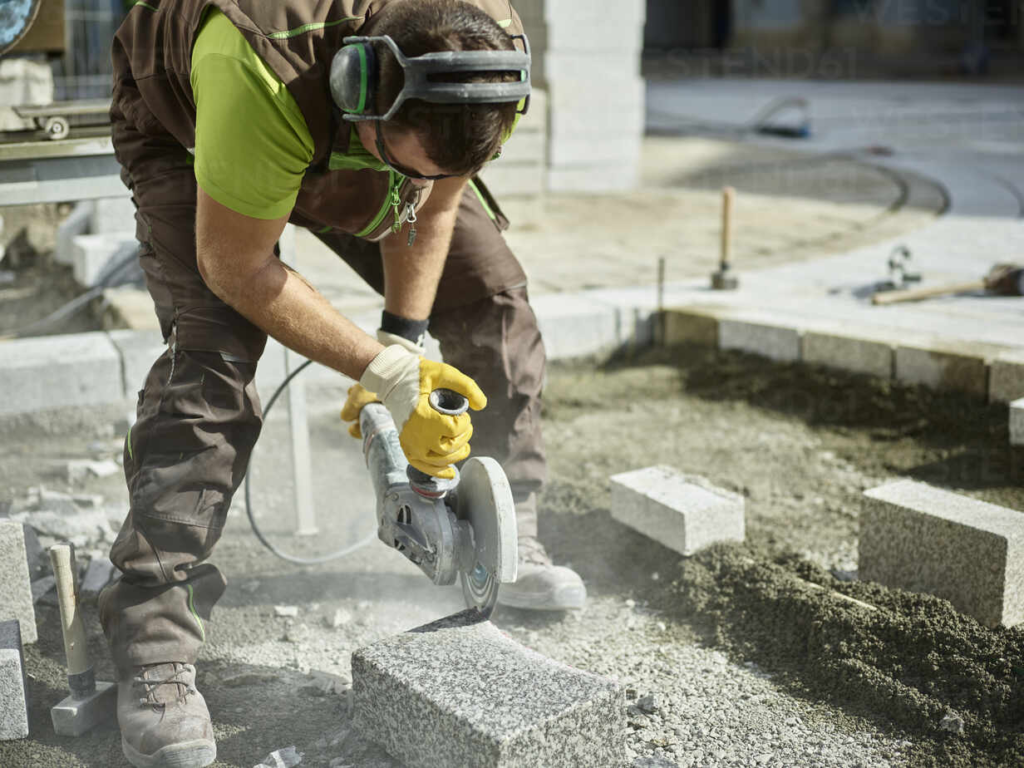
A concrete paver saw represents a significant investment, and its longevity hinges on ritualistic maintenance.
Concrete residue is chemically aggressive, and when left uncleaned, it crystallizes inside cooling vents and corrodes bearings. After every project, I perform a “triple rinse”: pressure-wash exterior surfaces, flush internal channels with distilled water, then air-blast hidden crevices.
Blade inspection reveals hidden dangers. Hold suspect blades against a straightedge; warping over 1/8″ indicates heat damage from inadequate water flow.
Dull blades don’t just slow progress; they increase amperage draw, potentially frying your saw’s motor. Professional sharpening restores 70% of worn blades using electroplated diamond redressing, but severe wear demands replacement.
Storage protocols prevent off-season deterioration. I coat metal surfaces with lithium-based grease, removing belts to prevent tension fatigue, and suspend blades vertically to avoid flat-spotting. Humidity-controlled environments are also ideal, as damp conditions invite corrosion that starts inside motor windings where you can’t see it.
Read also: How to cut pavers for curves? Learn now!
Safety: beyond the obvious
Silica dust from concrete cutting is an extremely dangerous carcinogen with cumulative effects. OSHA’s Table 1 regulations mandate water suppression plus N95 respirators for any kind of paver cutting, but true safety runs deeper. Position yourself upwind with a 45-degree stance, bracing for potential kickback that can twist wrists or worse.
Electrical safety, sadly, remains an overlooked aspect. Always use GFCI-protected circuits for electric saws, and never position cords where water pools.
For gas models, carbon monoxide buildup in enclosed spaces causes disorientation before collapse. Here, I monitor levels with wearable detectors on commercial sites. Post-cut cleanup protects families, and that’s why you should always mist adjacent surfaces before sweeping and rinse foliage where dust settles.
Precision as a structural imperative
Flawless cuts are needed both for aesthetics and engineering purposes. Gaps exceeding 3/8″ allow joint sand to wash out, inviting weed intrusion and paver settlement. Thin slivers under 2″ wide crumble under freeze-thaw cycles, creating trip hazards and requiring entire section replacements.
I always employ the “three-finger rule”: if a cut piece can’t span three finger widths, I redesign the pattern to maintain interlock integrity.
This precision pays dividends decades later. Properly cut pavers distribute load evenly across the base, preventing the “dish effect” where depressions form from repeated compression. Our restoration team sees it constantly, projects with machine-cut precision outlast hand-cut work by 10–15 years.
Your vision, perfected
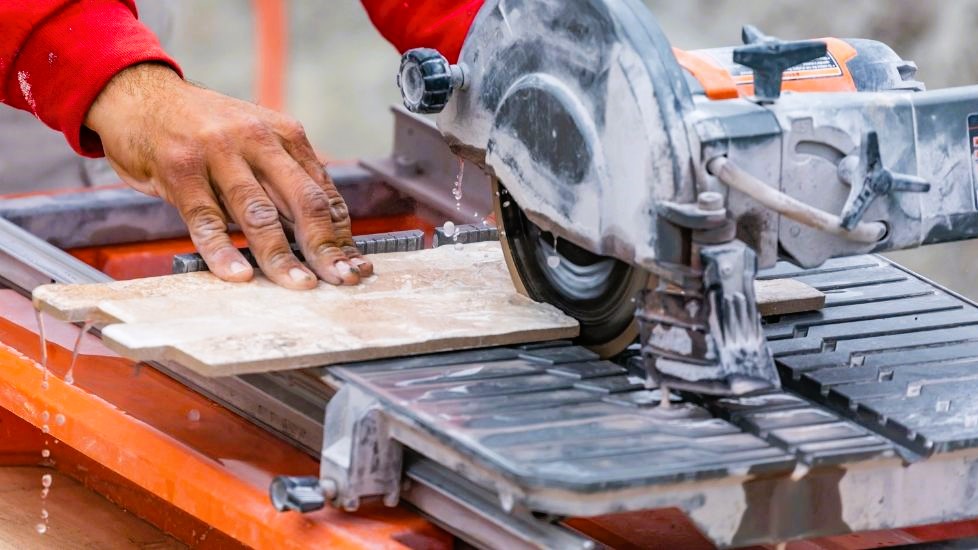
The concrete paver saw is more than steel and diamond; it’s the conduit between imagination and permanence. Whether you’re crafting a cottage walkway or monumental plaza, its judicious use separates fleeting trends from legacy installations.
The difference lies in respecting its physics, maintaining its integrity, and honoring the safety protocols that let craftsmen create decade after decade. And sometimes, the best way to do that is to hire professional hardscape contractors to take care of the whole cutting process for you.
Here at JS Brick, we’ve turned these principles into an art form, and we have offered this help to countless homeowners in Sarasota County, Florida. So, if you happen to be around, get in contact anytime for a free estimate on our services. We would love to add you to our list of satisfied customers.

